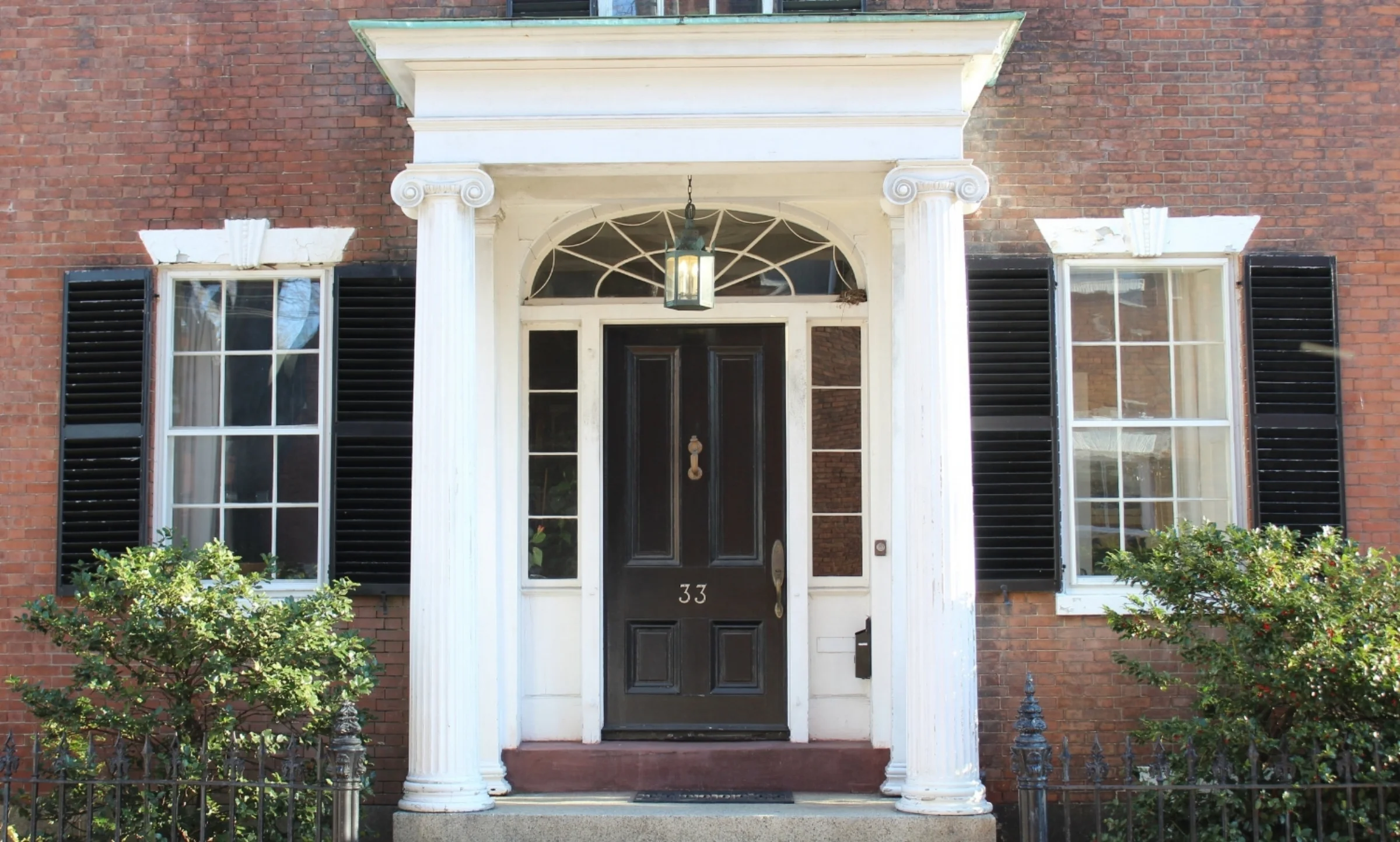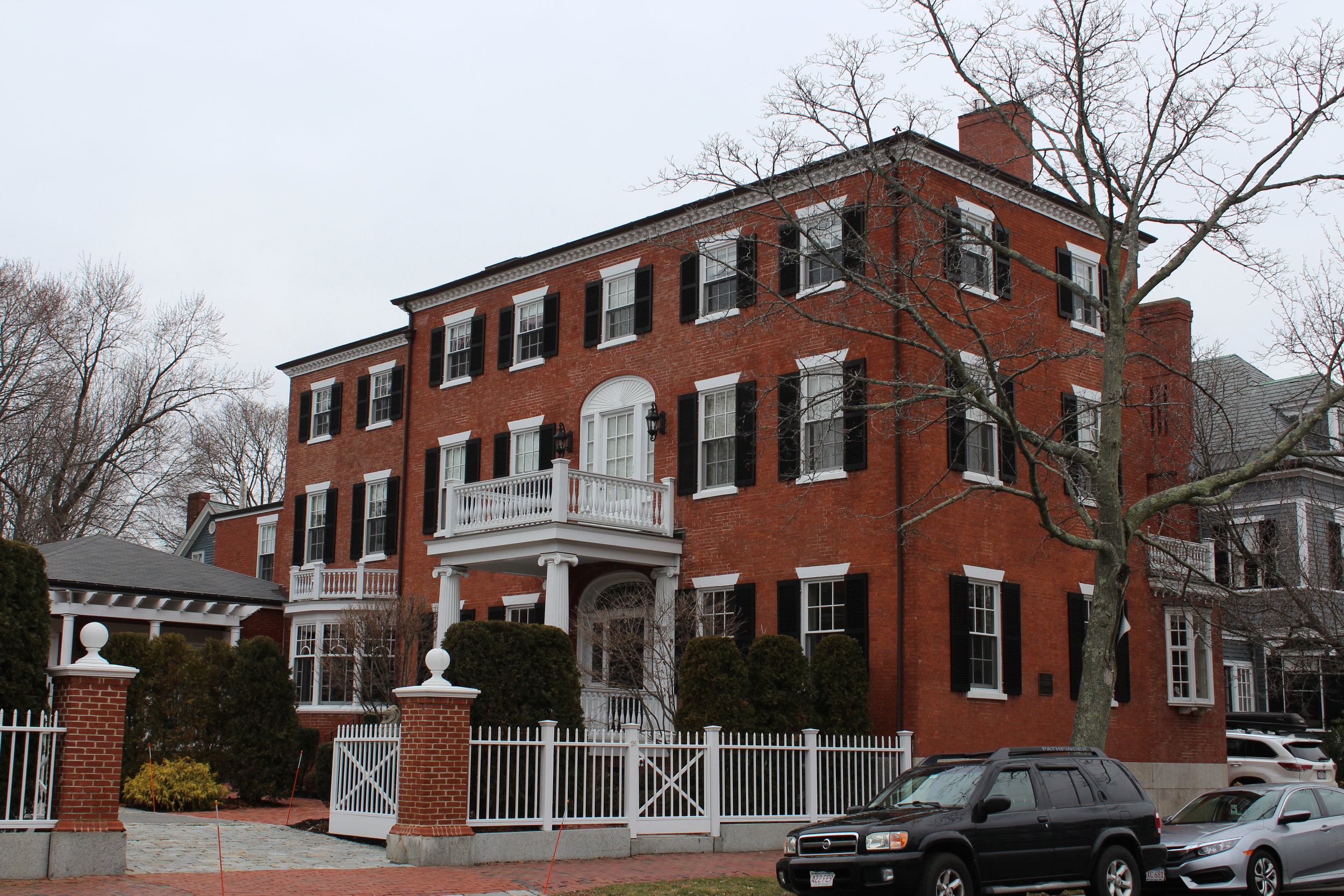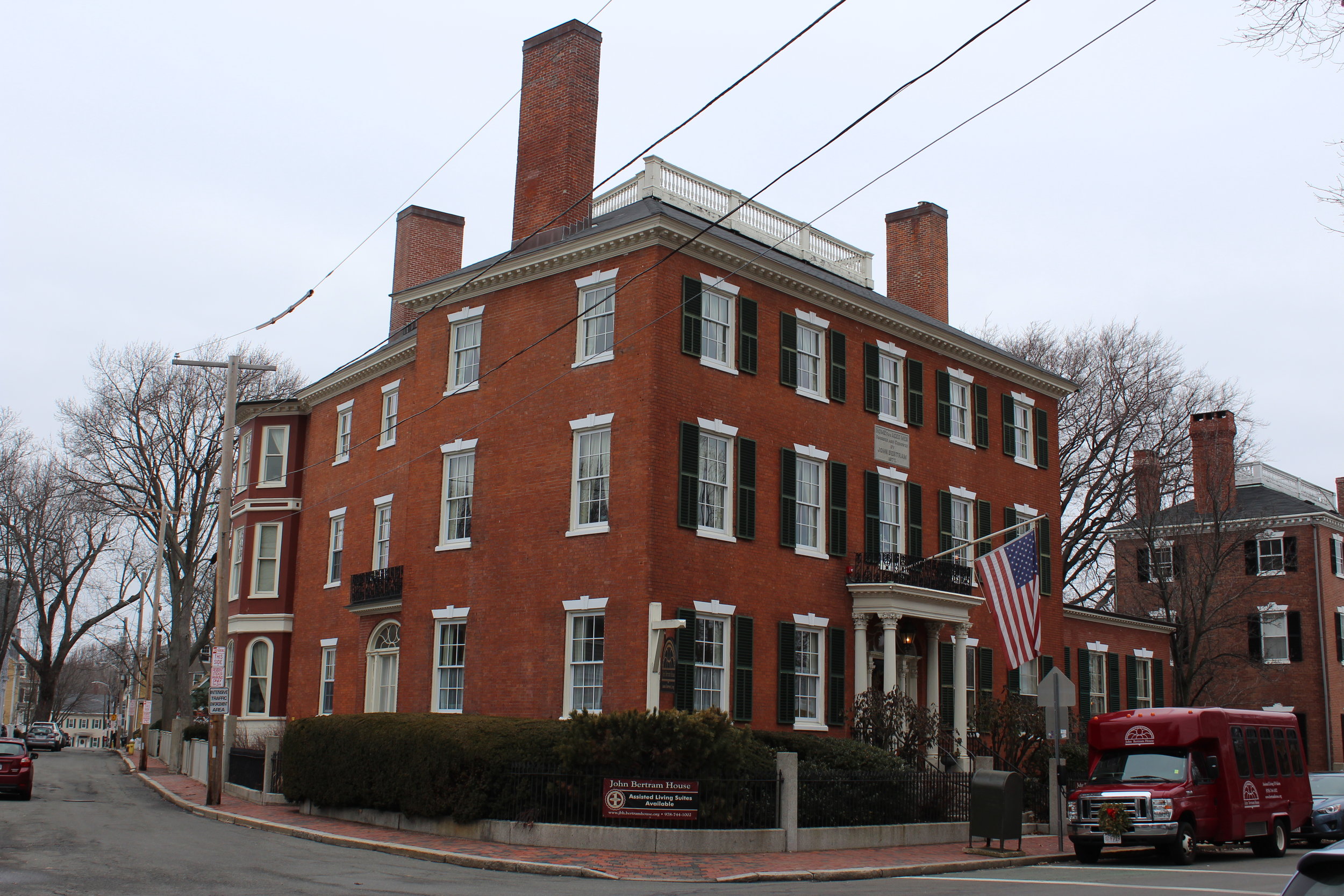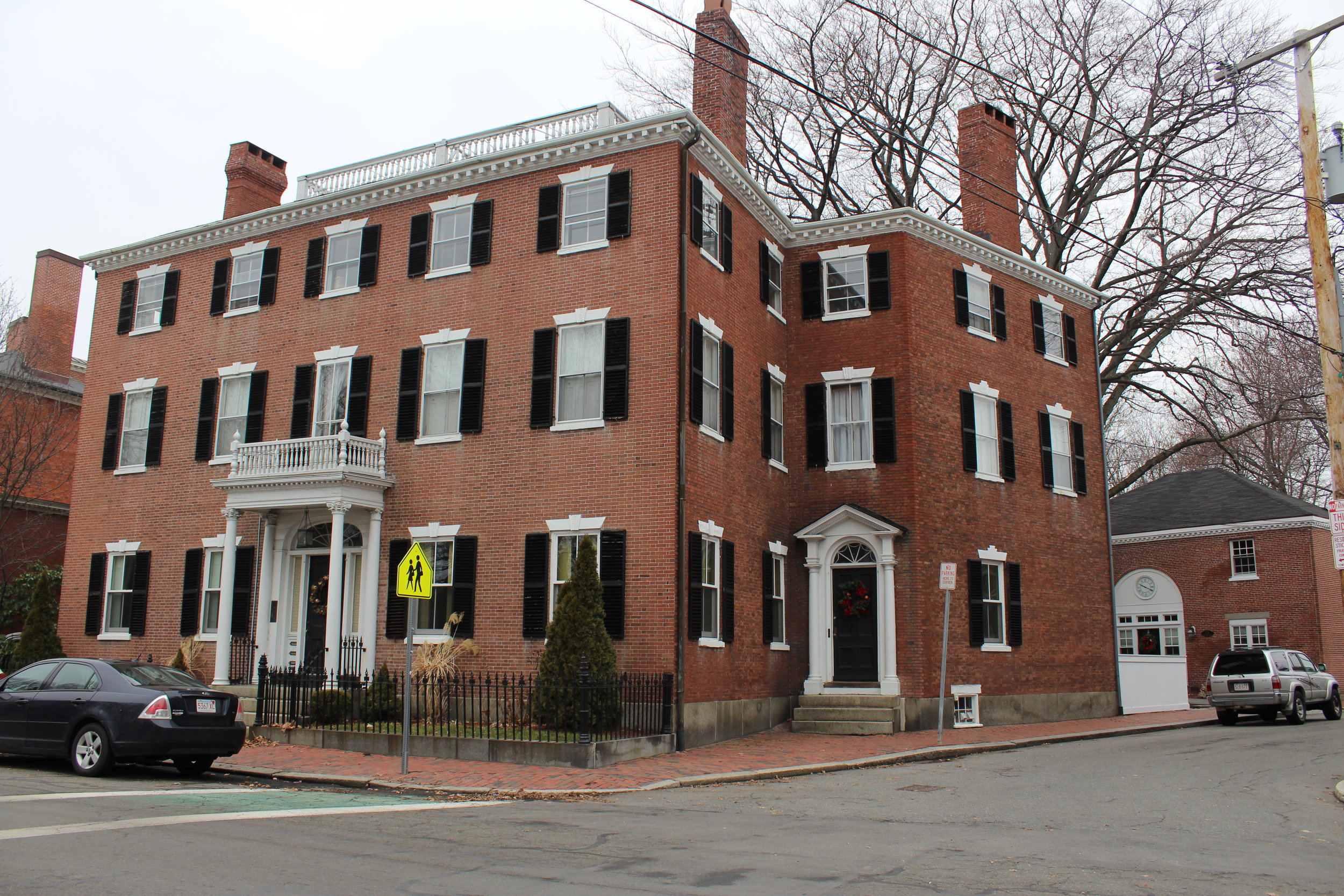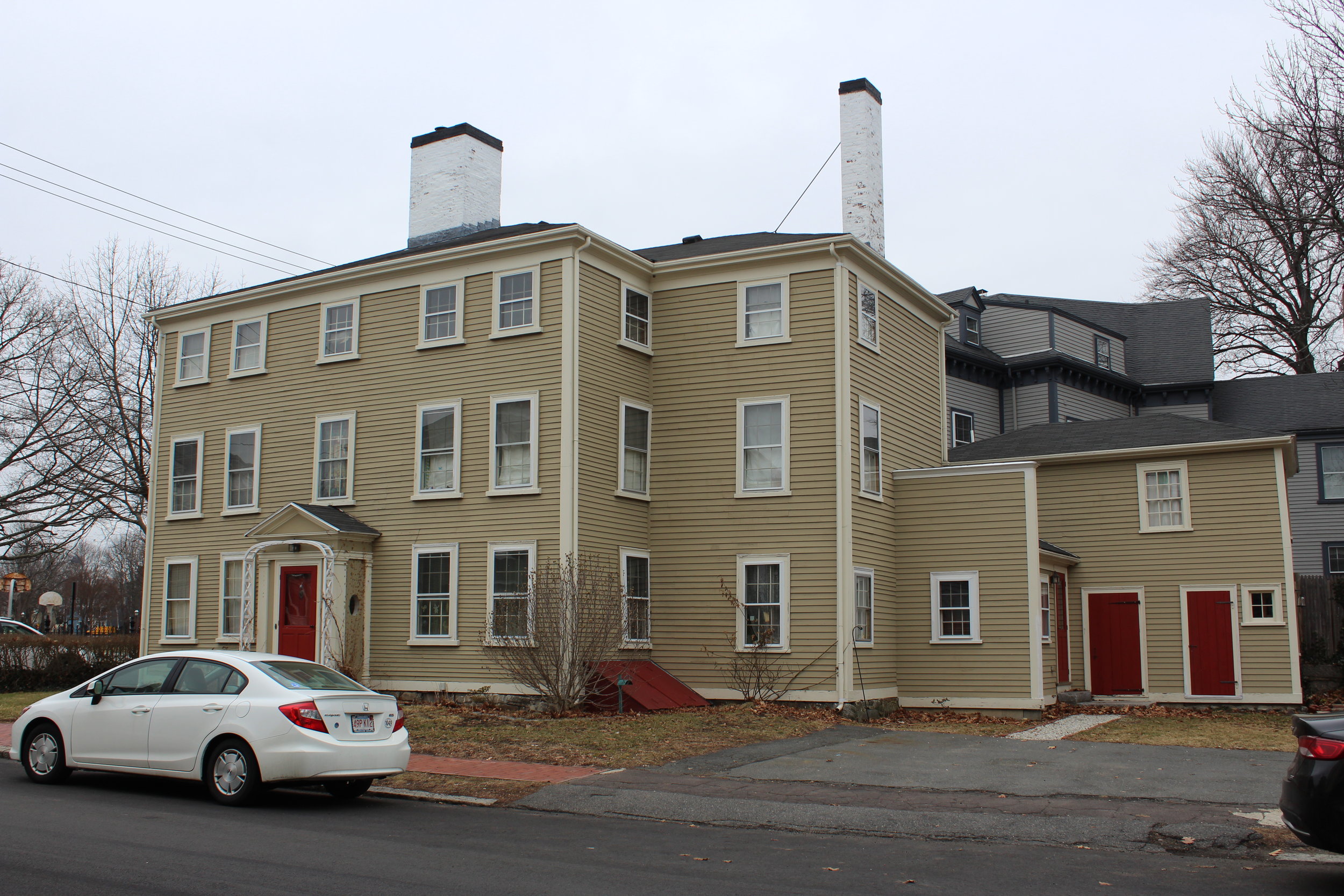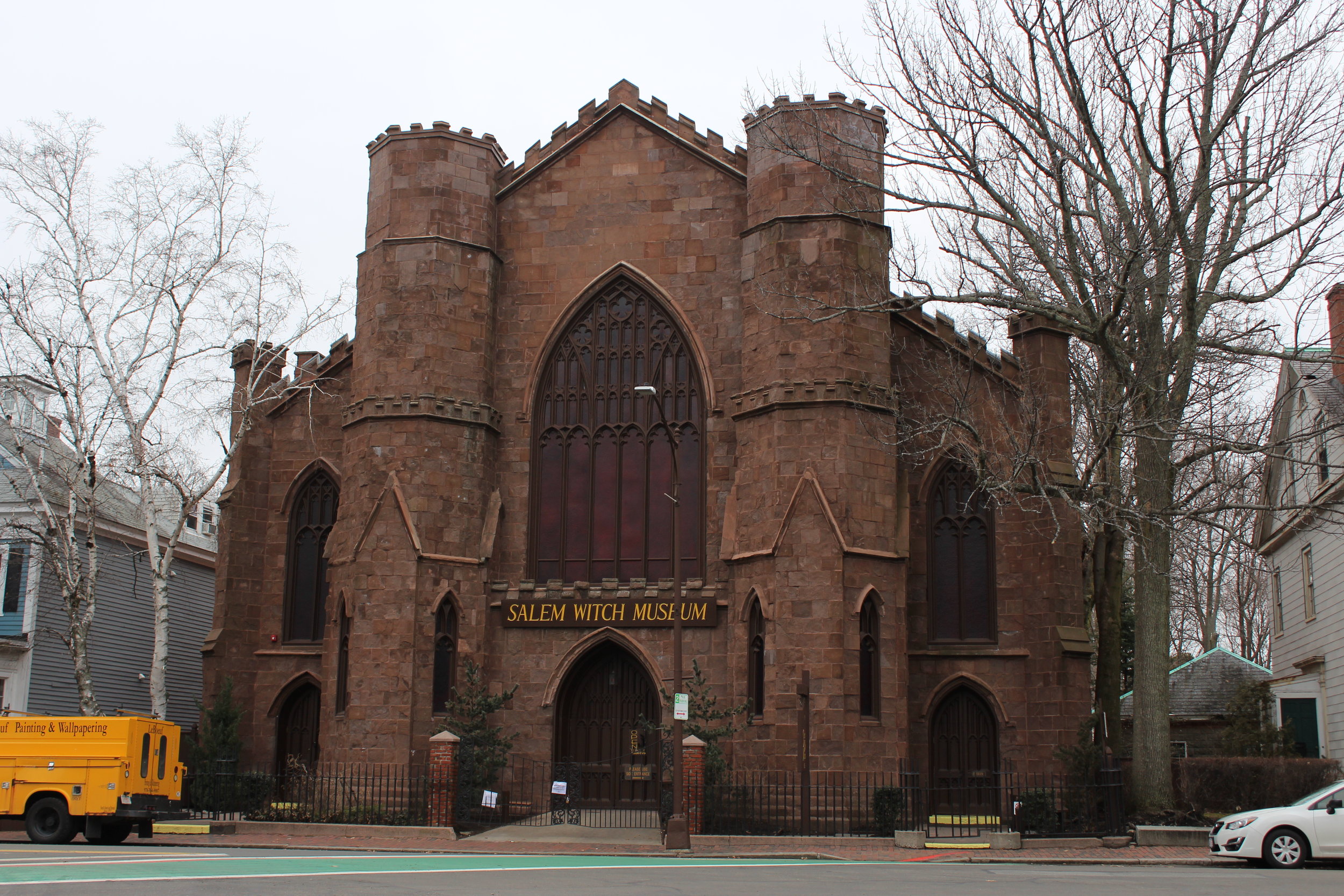WASHINGTON SQUARE HISTORIC DISTRICT
- Local historic district established in 1977;
Includes 46 properties surrounding the Salem Common and several buildings on Winter Street;
- Also listed in the National Register of Historic Places
History of Washington Square
The Salem Common has played an important role in Salem’s military and civic history since it was formally set aside as a training field for the local populace in 1714. It was not until 1802 when this open land was leveled and a short time later much improved by the erection of gates and a wood fence that the abutting land became desirable for residential use. For two decades thereafter, a number of the city’s leading merchants built imposing Neo-Classical mansions facing the Common. Foremost among these is the Andrew-Safford House (1818) at 13 Washington Square West. A number of houses in various revival styles were later built on remaining lots, resulting in an impressive concentration of early to mid-19th century dwellings.
In 1850, the wood fence around the Common was replaced by a decorative cast iron fence with pineapple finials and granite entry posts. In 1926, a new bandstand was erected in the Center of the Common in commemoration of Salem's Tercentennial. The concrete Colonial Revival style bandstand was designed by architect Philip Horton Smith. The Common has hosted many public gatherings over its history and served as a temporary home for many residents who had lost their homes in the Great Salem Fire in 1914.
The Washington Square District also includes the Hawthorne Inn (Hotel) built in 1925, the entire Essex Institute complex now part of the Peabody Essex Museum, the statue of Salem’s founder Roger Conant by H.H. Kitson (1913) and the Civil War Memorial at the head of Winter Street. One of the city’s early schools, the Phillips School (1883) is also included.
